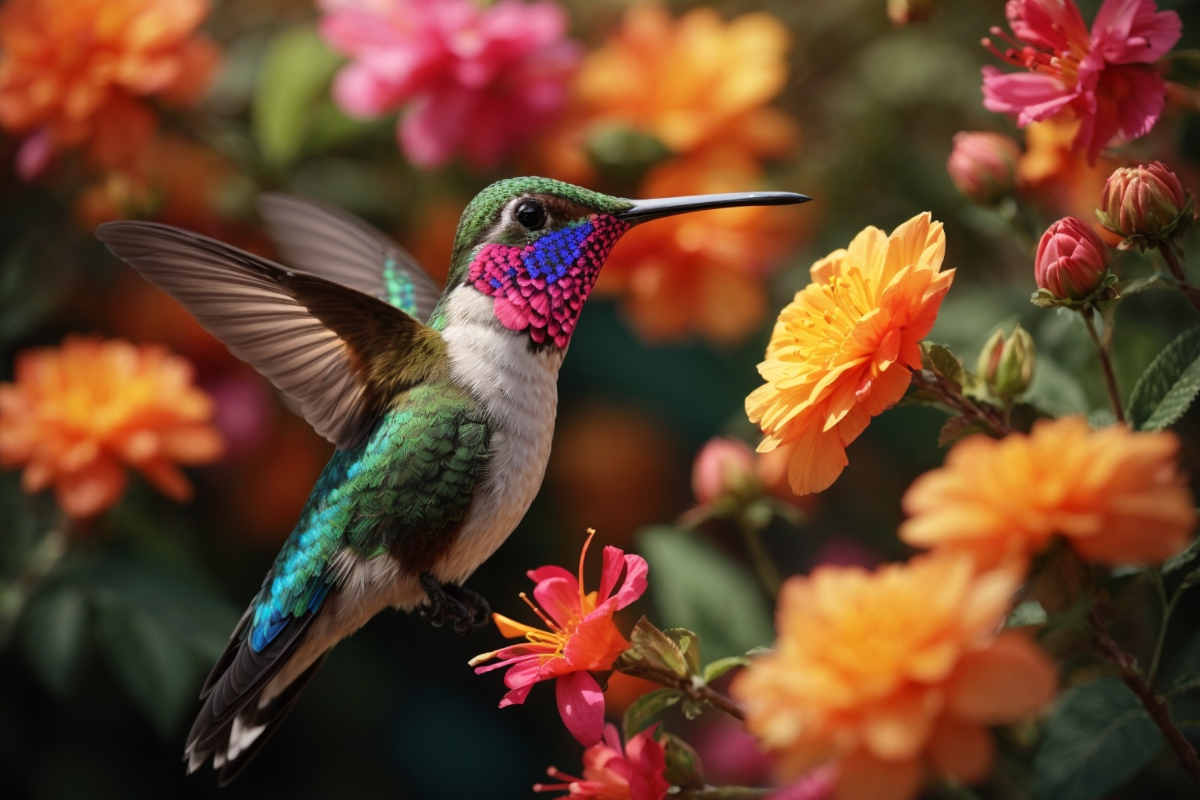Hummingbirds are, without a doubt, nature’s tiny helicopters. But here’s the deal: while we’ve mastered the science behind large rotary wings, understanding the complex aerodynamics of a hummingbird’s wings has been… well, a bit more elusive.
In this blog post, we will explore the world of hummingbirds and discuss the science behind the mesmerising hummingbird flight. So, grab a drink and let’s get into it.
Key Takeaways
- Wing: These birds have a figure-eight wing shuffle, flapping exceptionally at about 50 – 80 times a second during normal flights. Speedy hellos!
- Hovering Skill: Their tail feathers? Ace at mid-air magic tricks, making them pro hoverers.
- Diet and Digestion: They gulp nectar like it’s going out of style, and for some crunch, they snack on bugs. Plus, they digest faster than we decide on takeout.
- Other Facts: Sharp memory, killer eyesight, marathon-worthy stamina, and epic travel diaries. These birds aren’t just flying; they’re flexing!
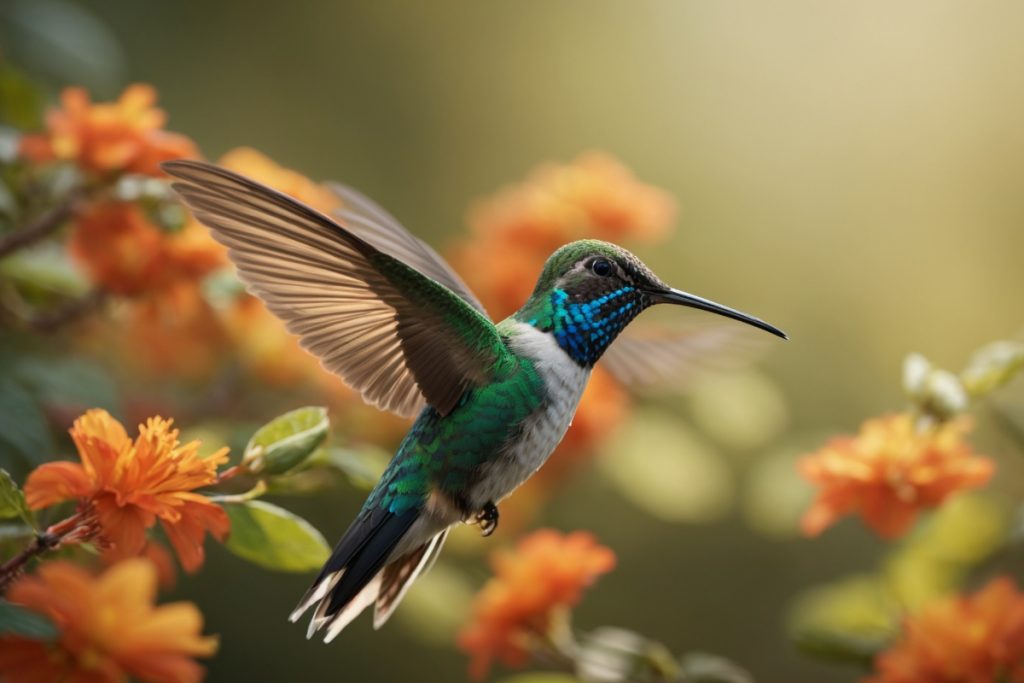
The Secret Mechanics Behind Hummingbird Rapid Wing Flaps
- Wing Structure: Unlike most birds that flap their wings up and down, hummingbirds move their wings in a figure-eight motion. This allows them to generate lift on both the upstroke and the downstroke. It’s like doing the wave at a sports event but at lightning speed. No wonder they never get tired at parties!
- Speed: During regular flights, a hummingbird can flap its wings between 50-80 times per second. Let that sink in. Basically, that’s faster than you can ever imagine.
- Muscles: About 25-30% of a hummingbird’s weight is just its pectoral muscles, which aids them in flight mode. That’s the bird equivalent of hitting the gym and only working on your pecs. Buff little things, aren’t they?
Hovering: A Feat of Strength and Precision
Hovering is no easy task. Imagine trying to balance on a unicycle while juggling. That’s sort of what it’s like for hummingbirds, but they make it look so effortless. The secret? It’s in their tail feathers!
These birds use their tail feathers as a rudder, making micro-adjustments to maintain a stable position in the air. It’s like having built-in stabilisers.
How Do Hummingbirds Re-Fuel?
For such tiny birds, hummingbirds have a massive appetite. They feed on nectar, which provides the sugar rush they need for their high-energy lifestyles.
- Diet: They visit thousands of flowers daily to get their fill. It’s like a non-stop foodie tour but for birds.
- Metabolism: They have one of the highest metabolic rates in the animal kingdom. In human terms, imagine needing to eat an entire supermarket’s worth of food every day just to get by.
- Tiny Insectivores: Besides nectar, hummingbirds also snack on insects and spiders, adding essential proteins, fats, and minerals to their diet. So, while they love their sugar, they don’t shy away from a little meaty treat now and then.
- Efficiency in Digestion: Due to their rapid metabolism, hummingbirds can digest their food incredibly quickly. A meal of nectar can pass through their system in as little as 20 minutes. It’s the ultimate fast-food experience, nature-style!
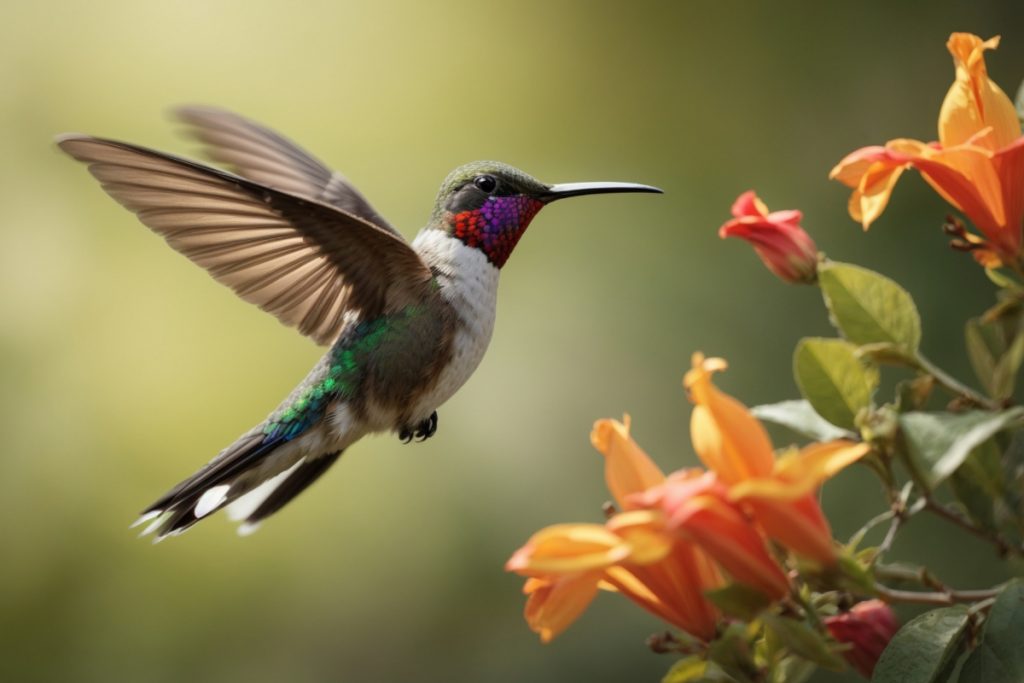
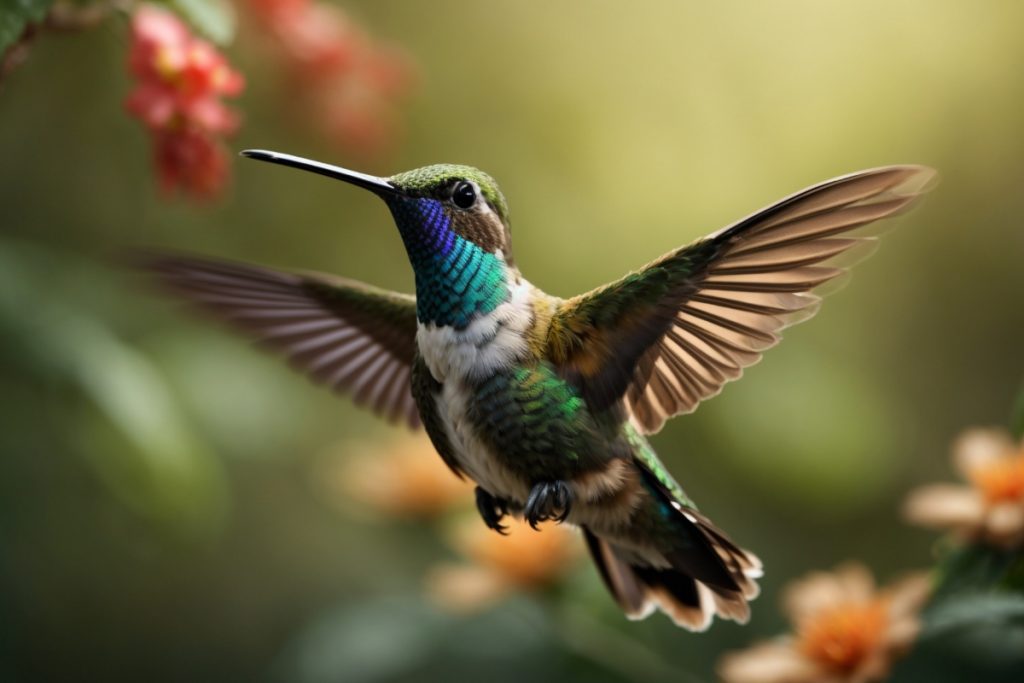
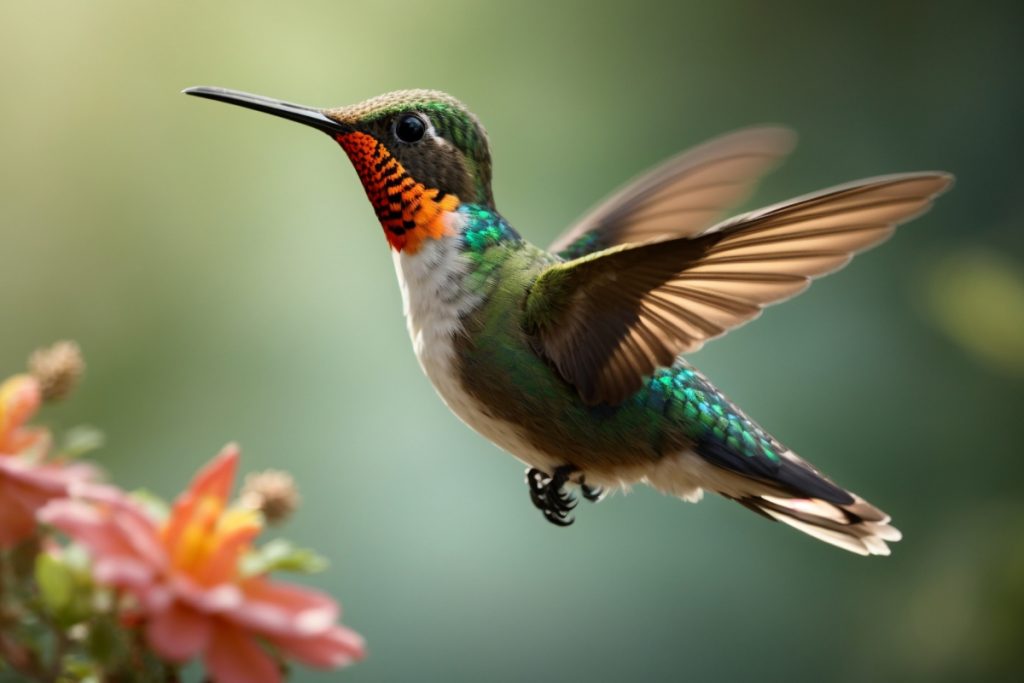
The Real-Life Hovering Champions
While drones and helicopters might be our man-made answers to hovering flight, hummingbirds have been perfecting this art for millennia. And it’s not just about the mechanics; it’s also about their ability to adapt and evolve.
- Evolving Skills: Recent studies suggest hummingbirds can remember every flower or feeder they’ve visited and the last time they fed from them. It’s like having an in-built GPS but for food.
- Vision: Their vision is also top-notch. They can see a broader spectrum of colours than we humans can. So, while you might see a lovely flower, they’re experiencing a rave of colours!
- Stamina and Agility: Despite their small size, hummingbirds can fly non-stop for 18 hours under the right conditions. This endurance, combined with their ability to fly forwards, backwards, and even upside down, makes them unrivalled among other birds of their size.
- Migration Mastery: Some hummingbird species, such as the Ruby-throated Hummingbird, embark on impressive migration journeys each year. This journey involves them travelling over 2,000 miles, including a non-stop 18-20 hour flight over the Gulf of Mexico.
Concluding Thoughts
To sum it all up, when next you see a hummingbird performing its dance, remember that these tiny birds are exceptionally gifted with the ability to dance in the air. Guess what? These birds are not only beautiful but also a remarkable gift from nature to us.
Yes, I know I have discussed many of the mysteries of hummingbird flying ability in this blog post, but there’s still so much more to learn about these beautiful birds. After all, isn’t that the beauty of nature – the never-ending quest for understanding our environment?
Until next time, keep your feeders filled, your binoculars handy, and your heart open to the endless wonders of the world around you. And who knows? Maybe one day, we’ll truly master the art of the hummingbird dance…
Thanks for reading, and happy birdwatching…
Useful Links:
Related Posts to Read:
References:
- About Hummingbird (Wikipedia).
- Greenewalt, C. H. (1960). Hummingbirds. New York: Doubleday. Google Scholar.
- Carey C. The impacts of climate change on the annual cycles of birds. Philos Trans R Soc Lond B Biol Sci. 2009 Nov 27; 364(1534):3321-30. doi: 10.1098/rstb.2009.0182. PMID: 19833644; PMCID: PMC2781852.
